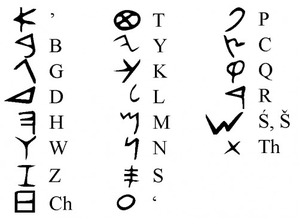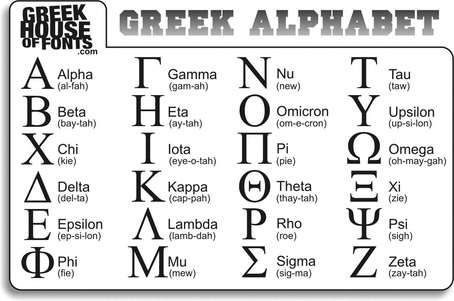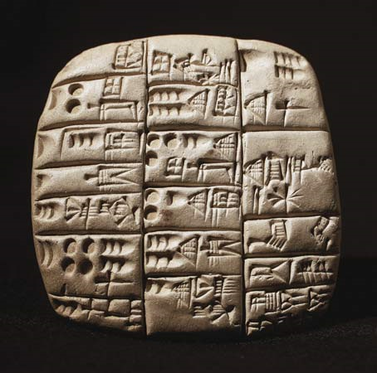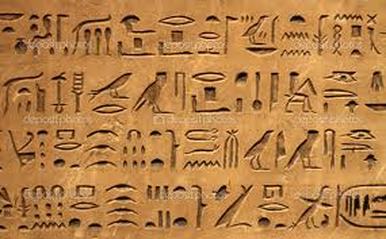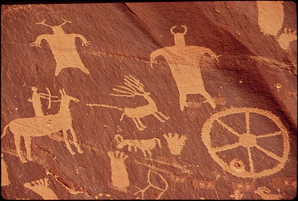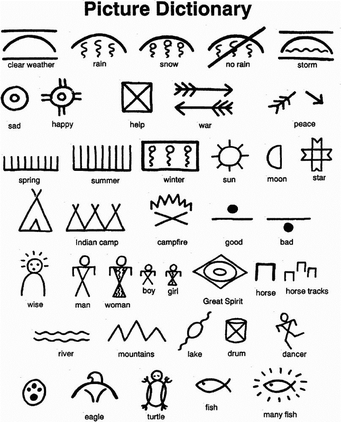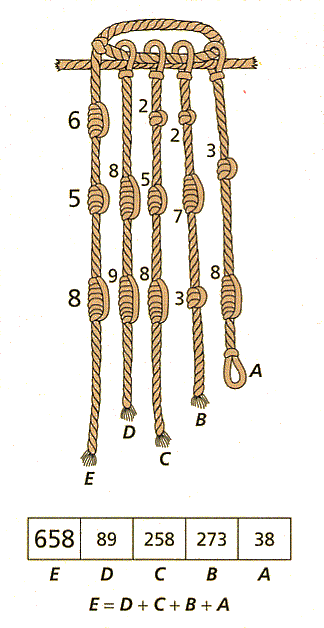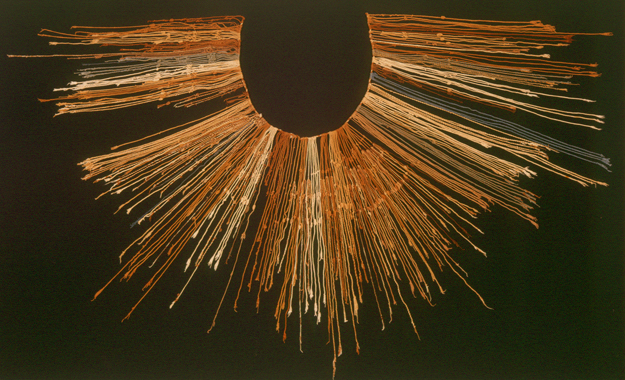Alphabet
While there are many different alphabetic scripts in the world, each and everyone clearly derived from an original alphabetic script. It is said that the history of the alphabet began in ancient Egypt. They had a set of about twenty-two hieroglyphic symbols. These symbols represented syllables that began with a single consonant of their language. These ‘alphabetic’ symbols helped in the pronunciation of hieroglyphic pictures.
Heavily influenced by the Egyptian alphabet was that of the Phoenicians. In this alphabet, there were twenty-two symbols. Phoenician was written from left to right. Vowels were often left out of their alphabetic system. By the 9th century BC, the Aramaeans had adopted the Phoenician alphabet.
Heavily influenced by the Egyptian alphabet was that of the Phoenicians. In this alphabet, there were twenty-two symbols. Phoenician was written from left to right. Vowels were often left out of their alphabetic system. By the 9th century BC, the Aramaeans had adopted the Phoenician alphabet.
Eventually, the Greeks, like many cultures, had also adopted the Phoenician alphabet. The Greeks had modified the alphabet, adding vowels. The Greek alphabet was the first to include the use of vowels. Once the Greeks had an alphabet, they began to write down their myths and fables. The Greeks are to thank for giving us vowels in the present alphabetic system. The Greeks also made way for other alphabetic systems.
The Latin alphabetic system began in 700 BCE. The Latin alphabet is very similar to what we see today. However, originally, Latin script was different. They had an alphabetic system closely related to the Estruscan alphabet. Almost all letters had the same phonetic values and the same shapes. The Latin alphabet was written from left to right. The alphabet brought the letter “O,” “D,” and “Q” back into their alphabet; for the Estruscans did not use these letters in their alphabet. Soon after, the Latin alphabet became standardized, and reads much like the English alphabet.
(Below: Phoenician alphabet)
The Latin alphabetic system began in 700 BCE. The Latin alphabet is very similar to what we see today. However, originally, Latin script was different. They had an alphabetic system closely related to the Estruscan alphabet. Almost all letters had the same phonetic values and the same shapes. The Latin alphabet was written from left to right. The alphabet brought the letter “O,” “D,” and “Q” back into their alphabet; for the Estruscans did not use these letters in their alphabet. Soon after, the Latin alphabet became standardized, and reads much like the English alphabet.
(Below: Phoenician alphabet)
 http://www.thebookmarkshop.com/latin/latinalphabet.htm
http://www.thebookmarkshop.com/latin/latinalphabet.htm
Content Sources:
http://www.ancient.eu.com/article/17/
http://www.ancient.eu.com/alphabet/
http://greece.mrdonn.org/alphabet.html
http://www.ancientscripts.com/latin.html
By Julianna Smith
http://www.ancient.eu.com/article/17/
http://www.ancient.eu.com/alphabet/
http://greece.mrdonn.org/alphabet.html
http://www.ancientscripts.com/latin.html
By Julianna Smith
Cuneiform
The word cuneiform comes from the Latin word ceneus, which meant ‘wedge.’ Cuneiform was invented by the Sumerians around 3500 BCE in Mesopotamia. This Ancient civilization encouraged this writing form. Many of the great ancient civilizations used this form such as the Babylonians, Akkadians, the Hittites, and the Assyrians.
This writing form was the first one that did not use pictures. Cuneiform didn’t represent objects by pictures, for it represented objects phonetically and semantically. However, the earliest forms of cuneiform were pictoral. This was when subjects were more visible. The writing style became more complex, though, as communication and storytelling became more complex. While useful, this system was problematic or conveying things other than simple nouns.
This writing form was the first one that did not use pictures. Cuneiform didn’t represent objects by pictures, for it represented objects phonetically and semantically. However, the earliest forms of cuneiform were pictoral. This was when subjects were more visible. The writing style became more complex, though, as communication and storytelling became more complex. While useful, this system was problematic or conveying things other than simple nouns.
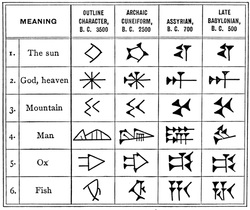
Cuneiform was created to keep records of goods and activity. Early on, cuneiform was logographic, which means that it used a sign or symbol to convey a noun or action. Cuneiform writing was composed of wedge-like symbols put together at different angles. Some symbols were very simple while others were very intricate. The more intricate symbols were made up of two simple symbols. Later on, the number of symbols used in cuneiform was lowered to make things simpler.
Content sources:
http://www.ancientscripts.com/cuneiform.html
http://etcsl.orinst.ox.ac.uk/edition2/cuneiformwriting.php
http://www.ancient.eu.com/cuneiform/
By Julianna Smith
http://www.ancientscripts.com/cuneiform.html
http://etcsl.orinst.ox.ac.uk/edition2/cuneiformwriting.php
http://www.ancient.eu.com/cuneiform/
By Julianna Smith
Hieroglyphics
Hieroglyphics, a system of writing in Ancient Egypt, was invented around the same time the Sumerians invented cuneiform. This was around 3500 BCE Some historians believe that the Egyptians were influenced by cuneiform, but some evidence suggests that the hieroglyphics writing was developed earlier than cuneiform. Egyptians believe that this writing form was given to them by the Egyptian god, Thoth. They called this form ‘mdju netjer’which means ‘words of the gods.’
Hieroglyphics uses more than 2,000 characters. Each symbol, called a hieroglyph, represents a common object. To represent an owl, an owl would be drawn. The hieroglyphs are both phonetic and semantic. The Egyptians did use an alphabet. When speaking, they did use vowels, but they rarely wrote them down on papyrus. When the Egyptians would describe, for example, a crocodile, they would put a hieroglyph of a crocodile. This, combined with some letters put together to make a crocodile’s sound, indicated a crocodile. The hieroglyphic writing system was used mainly for inscriptions on the walls of temples and tombs.
The first discovery of this writing form was discovered on bone and ivory tags, and clay pots. They were found in the ancient tomb in Abydos. In the later periods of the Egyptian Empire, the Egyptians developed a writing form called hieratic, which replaced hieroglyphics for record keeping and religious texts. However, hieroglyphs were still used in religious buildings and monuments.
Hieroglyphics uses more than 2,000 characters. Each symbol, called a hieroglyph, represents a common object. To represent an owl, an owl would be drawn. The hieroglyphs are both phonetic and semantic. The Egyptians did use an alphabet. When speaking, they did use vowels, but they rarely wrote them down on papyrus. When the Egyptians would describe, for example, a crocodile, they would put a hieroglyph of a crocodile. This, combined with some letters put together to make a crocodile’s sound, indicated a crocodile. The hieroglyphic writing system was used mainly for inscriptions on the walls of temples and tombs.
The first discovery of this writing form was discovered on bone and ivory tags, and clay pots. They were found in the ancient tomb in Abydos. In the later periods of the Egyptian Empire, the Egyptians developed a writing form called hieratic, which replaced hieroglyphics for record keeping and religious texts. However, hieroglyphs were still used in religious buildings and monuments.
Content Sources :
http://www.greatscott.com/hiero/hiero_alpha.html
http://www.timetrips.co.uk/when_hieroglyphic_invented.htm
http://www.omniglot.com/writing/egyptian.htm
http://ancientegyptonline.co.uk/hieroglyphs.html
By Julianna Smith
http://www.greatscott.com/hiero/hiero_alpha.html
http://www.timetrips.co.uk/when_hieroglyphic_invented.htm
http://www.omniglot.com/writing/egyptian.htm
http://ancientegyptonline.co.uk/hieroglyphs.html
By Julianna Smith
Pictographs
The oldest types of writing systems often involved using pictures to communicate. This was the pictographic writing style. The writing style was in Mesopotamia used by the Sumerians in 3,000 BCE. Pictographs eventually developed into such writing forms as cuneiform, where the Sumerians of used wedge shapes to communicate.
This writing style used simple pictures as ways to communicate. The drawings were usually very literal, but they became more complicated as time went on. They used a stylus to draw pictures into clay and dirt surfaces. This style is similar to the writing form of hieroglyphics, but it is easier to read and understand. In fact, it was the basis for cuneiform and hieroglyphics. Some cultures drew on the walls of caves. They would use pictographs to tell stories and communicate with each other. This writing style was, and is still, very universal. Everyone understands literal symbols such as pictures.
The pictographic writing style is still used today. People who live in non-literate countries still use it as their means of communication. In literate countries, however, pictographs are used only to represent simple ideas or objects.
This writing style used simple pictures as ways to communicate. The drawings were usually very literal, but they became more complicated as time went on. They used a stylus to draw pictures into clay and dirt surfaces. This style is similar to the writing form of hieroglyphics, but it is easier to read and understand. In fact, it was the basis for cuneiform and hieroglyphics. Some cultures drew on the walls of caves. They would use pictographs to tell stories and communicate with each other. This writing style was, and is still, very universal. Everyone understands literal symbols such as pictures.
The pictographic writing style is still used today. People who live in non-literate countries still use it as their means of communication. In literate countries, however, pictographs are used only to represent simple ideas or objects.
Content Sources:
http://web.cn.edu/kwheeler/documents/Pictographs.pdf
http://www.pictopen.com/
http://oi.uchicago.edu/OI/MUS/ED/TRC/MESO/writing.html
http://www.citrinitas.com/history_of_viscom/ideograms.html
http://www.historian.net/hxwrite.htm
By Julianna Smith
http://web.cn.edu/kwheeler/documents/Pictographs.pdf
http://www.pictopen.com/
http://oi.uchicago.edu/OI/MUS/ED/TRC/MESO/writing.html
http://www.citrinitas.com/history_of_viscom/ideograms.html
http://www.historian.net/hxwrite.htm
By Julianna Smith
Quipu
The Incas never developed a form of writing but they did, however, develop a calculation system. Quipu is an accounting device based on ropes and knots. An individual quipu is many ropes tied together. The original or simplest form is a main cord, about one yard long, tying many cords to one unit; this can repeat up to four levels. The chords have knots or just one knot at different levels and positions. With color and knots, they could keep record and store data. Different colors were used to identify different things. If the Incas wanted to count gold or silver, they would use gold and silver strings. Quipu enabled the government to collect important data. Different sequences of knots represented digits that make up numbers bigger than ten.
Young boys would spend a whole year in school just learning quipu. It took a long time to master but the boys who did it well would become quipu interpreters. Quipu interpreters could count and tell data very easily. Very efficient quipu interpreters went on to master records of the entire kingdom. Accountants also used quipu and were called uipucamoyacs. The accountants could create quipu knots and decipher them easily. They were also able to perform simple math equations using quipu knots. Quipus were the main sources of records in the Incan government. The Incas passed history and information down to the next generation using quipu.
Young boys would spend a whole year in school just learning quipu. It took a long time to master but the boys who did it well would become quipu interpreters. Quipu interpreters could count and tell data very easily. Very efficient quipu interpreters went on to master records of the entire kingdom. Accountants also used quipu and were called uipucamoyacs. The accountants could create quipu knots and decipher them easily. They were also able to perform simple math equations using quipu knots. Quipus were the main sources of records in the Incan government. The Incas passed history and information down to the next generation using quipu.
Sources:http://www.machupicchu-inca.com/quipu.html
http://www.ancientscripts.com/quipu.html
http://quipuapps.com/what-is-a-quipu/
By Sophia Gonzalez Mayagoitia
http://www.ancientscripts.com/quipu.html
http://quipuapps.com/what-is-a-quipu/
By Sophia Gonzalez Mayagoitia
